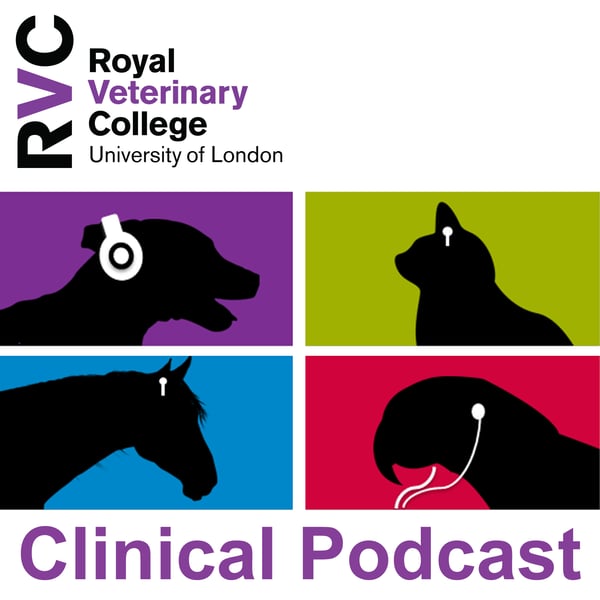36 Continuous Renal Replacement Therapy and Therapeutic Plasma Exchange
Veterinary Clinical Podcasts
Dominic Barfield
5 • 643 Ratings
🗓️ 31 March 2017
⏱️ 23 minutes
🧾️ Download transcript
Summary
Today we talk to Stefano Cortellini, lecturer in emergency and critical care here at the RVC about the process and indications for Continuous Renal Replacement Therapy (CRRT) and Therapeutic Plasma Exchange (TPE). Further information about this therapy can be found here http://www.rvc.ac.uk/small-animal-referrals/advanced-techniques-and-specialist-procedures/continuous-renal-replacement-therapy
Information on acute kidney injury (AKI) and grading can be found on the website of the International Renal Interest Society (IRiS) here http://www.iris-kidney.com/guidelines/grading.html
The indications for considering treating patients with AKI are; metabolic acidosis, electrolyte imbalance (especially refractory hyperkalaemia), and uraemia. The patients we see, have a potential reversible cause, are often anuric and we can successfully catheterise. tend to be most affected are those that are anuric. Some toxins can be removed by dialysis when different filters are used. TPE has been used for immune mediated diseases (IMHA, polyradiculoneuritis), and cutaneous and renal glomerular vasculopathy.
If you are in the UK and have a patient that you might think benefit from this therapy, then do not hesitate to contact the RVC http://www.rvc.ac.uk/small-animal-referrals/
Suggested reading.
Review of CRRT and blood purification http://onlinelibrary.wiley.com/doi/10.1111/vec.12028/abstract
Single pass lipid dialysis for ivermectin toxicosis http://onlinelibrary.wiley.com/doi/10.1111/vec.12581/abstract
Therapeutic plasmapheresis in IMHA http://onlinelibrary.wiley.com/doi/10.1111/j.1476-4431.2009.00431.x/abstract
If you have any comments about this podcast, please get in touch (email [email protected]; tweet @dombarfield or @RoyalVetCollege using #rvcpod; or use the RVC facebook page). We would greatly appreciate your time to rate us on iTunes and write a review.
Transcript
Click on a timestamp to play from that location
| 0:00.0 | Hi there, Dominic Barfield here, and this is the RVC Clinical Podcast. Thank you for listening and thank you for subscribing. |
| 0:05.3 | We'd be grateful if you could go to iTunes and leave us a review. Obviously, we'd prefer a five-star review, but we'd greatly appreciate any sort of feedback that you have. |
| 0:13.4 | You can tweet me at Dom Barfield or email me, D Barfield at RVC.ac.ac.uk, if you have any comments or suggestions. |
| 0:25.5 | Today we're joined by Dr. Stefano Cortilini and we're going to talk about all things to do with renal replacement therapies. |
| 0:28.4 | Hello, Dom. Thanks for inviting me. |
| 0:31.3 | Well, thank you, thank you for having your arm twisted to come along. |
| 0:35.5 | Absolutely. |
| 0:36.7 | So I suppose for our listeners, so Stephanie and I work together in the ICU and emergency room |
| 0:45.0 | of the Queen and the Hospital for Animals, which is the teaching hospital and referral |
| 0:50.5 | vet clinic for the Royal Veteran College. |
| 0:52.9 | And I think we've probably worked together for now maybe six years, five, six years. |
| 0:58.8 | So maybe there'll be some familiarity with the conversation that we have. |
| 1:04.4 | Anyway, thank you again, Stephanie. |
| 1:06.9 | See, what I would like to talk about really is to do with continual renal replacement therapy |
| 1:12.5 | or as other colleagues have said like blood purification. So what is continuous renal |
| 1:20.2 | replacement therapy firstly? Absolutely. So it's basically a method by which bloods |
| 1:27.4 | gets, as you said, purified. |
| 1:29.6 | So by placing a catheter in the jugular, what we do is we remove the blood from the patient |
| 1:36.2 | continuously in a continuous fashion. |
| 1:40.6 | The blood goes into sort of artificial kidney kidney gets purified by so electrolytes, |
| 1:48.0 | potassium or urea and cradine get removed along with way more substances that we don't measure |
| 1:56.0 | and then the blood gets returned to the patient and And that happens over, obviously, in a continuous fashion, |
... |
Please login to see the full transcript.
Disclaimer: The podcast and artwork embedded on this page are from Dominic Barfield, and are the property of its owner and not affiliated with or endorsed by Tapesearch.
Generated transcripts are the property of Dominic Barfield and are distributed freely under the Fair Use doctrine. Transcripts generated by Tapesearch are not guaranteed to be accurate.
Copyright © Tapesearch 2025.

